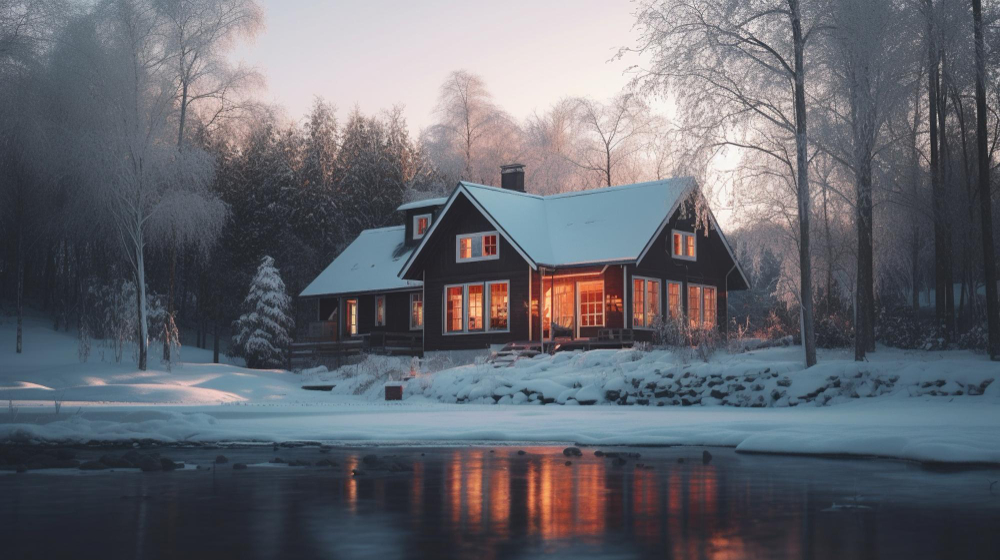Getting Your Home Ready for the Winter
With winter just around the corner, it’s time to start protecting your home from the elements. If you’re wondering how to start getting your home ready for the winter here in New Jersey, we here at Barrister Home have put together a comprehensive list of tasks to complete before the chilly months hit.
Here are some key tasks to complete around the home:
Protect your pipes
Most pipes contain at least a small amount of water at all times, meaning they’re liable to freeze when the mercury plummets. Frozen pipes can leave homeowners without water and, in worst-case scenarios, burst and cause serious flooding. Fortunately, it’s relatively easy to avoid frozen pipes with the following simple steps:
- Insulate water tanks and pipes: Wrap your pipes with foam insulating covers. This step is especially important in cold zones such as attic spaces and outdoor areas.
- Run your taps: Water is much less likely to freeze if it’s running, so remember to turn your taps on every so often. Write a reminder and stick it on the wall if you have to!
- Drain your water system: If you’re planning on going away this winter, remember to completely drain your water system beforehand.
Inspect your roof
Winter weather tends to be gustier, so it’s worth checking your roof for loose slates or tiles and removing any debris, such as broken tree branches. This simple task will protect people and wildlife from flying objects, as well as ensure that your roof is fully heat-efficient. If you discover any holes or damaged parts of the roof, you may wish to fix them yourself or call in a professional operative.
Replace faulty insulation
If you own an attic or crawlspace, you must check for missing or faulty insulation. As well as preventing heat loss from your home, this simple step will save you money on energy bills and reduce your carbon footprint.
Before venturing into your crawlspace or attic, remember to wear protective clothes and shoes to prevent accidents. You should also bring a flashlight for maximum visibility. Then, you can get on with the following:
- Assess the level of damage. Purchase as much insulation as you need while paying attention to its R-number (this denotes how much protection insulating products offer).
- If your insulation has fallen a little but remains in good condition, simply install an insulation support rod between the floor joists or rafters.
- If insulation is missing or needs replacing, measure the length of space that requires insulation and cut some new strips to size. Use a staple gun to secure the material to the rafters.
Insulate your windows and doors
If you can feel drafts emanating from your windows or doors, your home is not fully energy efficient. To mitigate against heat loss and reduce your energy bills, you should seal all drafty windows and doors in one or more of the following ways:
- Add weather stripping: Weather strips represent a cost-effective way to seal your windows and doors. They come in three main varieties, including V-type, foam, and compression strips. Compression strips tend to be the most durable, while foam strips are the easiest to install.
- Stick foam tape to wonky windows: If your windows aren’t completely straight, apply foam tape to seal them.
- Purchase door sweeps: Door sweeps are designed to block cold air from entering through the bottom of exterior doors. For maximum efficacy, remember to cut them down to size for a cozy fit.
- Add caulking: If the caulk is peeling off your windowpanes and doorframes, add a fresh layer.
- Hang insulating curtains: Heavy-duty curtains can add an extra layer of protection during winter, although you will need to keep them closed for most of the day.
- Apply window film to windows: Window film is a transparent film that helps insulate windows during the winter months. It’s also very easy to install – simply cut it down to size, place it on your windows, and heat it with a blow dryer. The heat will ensure it sets in place.
Clean gutters and downspouts
Cleaning your gutters and downspouts will prevent the build-up of ice and protect your drainage system from damage. You can use a regular garden hose or a specialized vacuum to remove debris such as leaves and sticks – just remember to use a robust extension ladder rather than a stepladder, as this will prevent falls. If your gutters are seriously blocked, or you’re unable to do the job yourself, it is worth calling in some professionals as soon as possible.
Replace air filters in your home
Renewing your air filters will ensure that air flows more easily around your property, therefore reducing the stress on your cooling and heating system. It will also improve the air quality in your home and reduce the spread of airborne viruses and bacteria – vital for protecting friends and family members from nasty winter bugs.
Seal your fireplace
Fireplaces are great for creating a cozy atmosphere during long winter nights. However, they can generate chilly drafts while not in use. To combat this, cut a piece of sturdy foam that fits into the opening of the fireplace. It is also a good idea to hire a chimney sweep to assess and clean your chimney.
Close your crawlspace vents
Crawlspace vents should be closed once fall hits. This simple task will help protect your water pipes from freezing over and will reduce heat loss in the home. Remember to open them again once spring arrives, as this will prevent moisture build-up.
Add insulation to your spigots
You should add a layer of insulation to your spigots as well as your pipes – a frozen spigot could lead to a very costly leak. Fortunately, there are plenty of insulated faucet covers available in DIY stores.
Book a water heater inspection
Winter is the worst time to be out of hot water, so remember to arrange a water heater inspection with a fully qualified plumber. The plumber will be able to detect any potential problems early, thus reducing your chances of having to pay for costly repairs later in the year.
Stay warm, and enjoy the snowy winter months!
Looking to build a custom home in New Jersey? Contact Barrister today!




